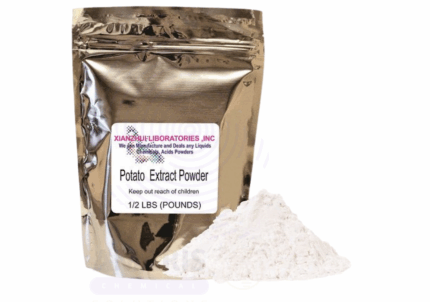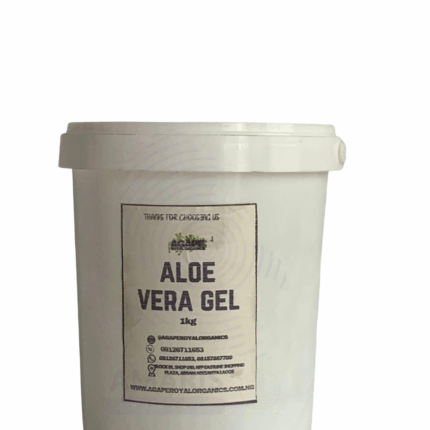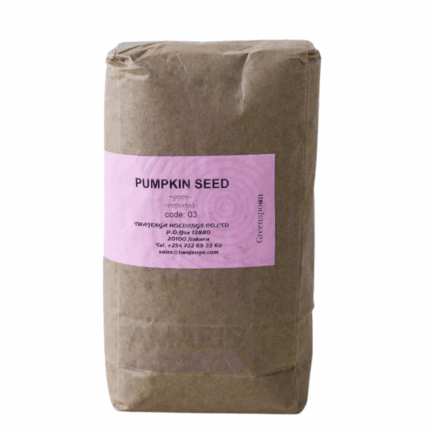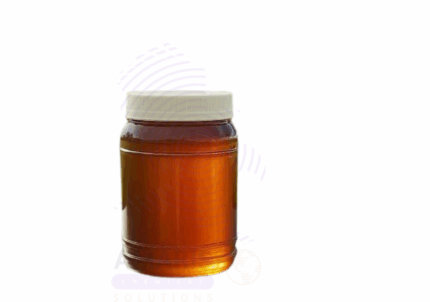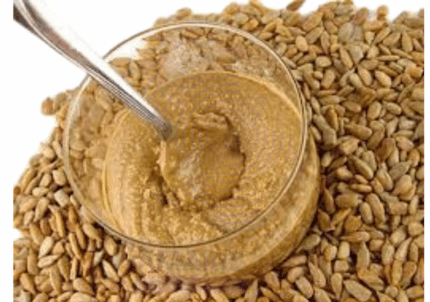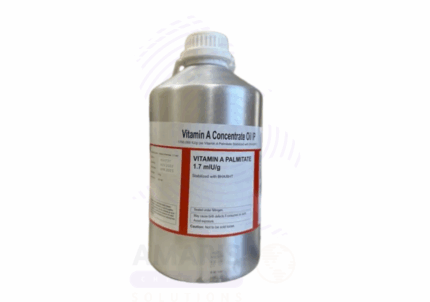Apricot Powder
$ 5.06 Original price was: $ 5.06.$ 4.94Current price is: $ 4.94.
Apricot powder is a dehydrated, finely ground form of apricot fruit, retaining much of the natural flavor, aroma, and nutritional properties of fresh apricots. It is typically made by drying fresh apricots through spray drying, freeze drying, or drum drying, then milling into a fine powder. Apricot powder is rich in vitamins, minerals, dietary fiber, and antioxidants such as beta-carotene and vitamin C. It is widely used as a natural flavoring agent, colorant, and nutritional supplement in food and beverage products, as well as in cosmetics and dietary supplements. Its convenient powdered form allows for easy incorporation into dry mixes and processed goods without the perishability of fresh fruit.
Apricot Powder
Primary Uses
- Food & Beverages
- Used as a natural flavor enhancer and sweetener in bakery products, confectionery, dairy products, smoothies, and beverages.
- Incorporated into nutritional bars, cereals, and snack mixes for added fruit flavor and nutrition.
- Used in powdered drink mixes and fruit-flavored powders for reconstitution.
- Dietary Supplements & Nutraceuticals
- Added to multivitamin blends, fruit-based supplements, and antioxidants formulas for natural fruit nutrients.
- Cosmetics & Personal Care
- Used in facial scrubs, masks, and skin-care formulations for gentle exfoliation and vitamin content.
- Flavor & Fragrance Industry
- Used as a natural flavor base in fruit-flavored products and perfumes.
Secondary Uses
- Pet Food & Treats
- Added to pet foods and treats to provide natural fruit flavor and nutrients.
- Pharmaceuticals
- Occasionally used as a natural excipient or flavoring agent in medicinal syrups and supplements.
- Food Decoration
- Used as a dusting powder for cakes, pastries, and chocolates to enhance appearance and flavor.
1. Basic Identification Attributes
- Chemical Name (IUPAC): Not applicable (natural product)
- Common/Trade Name: Apricot Powder
- CAS Number: Not applicable
- HS Code: 0813.40.00 (Dried fruit powders)
- Molecular Formula: Variable (natural composition of carbohydrates, vitamins, minerals)
- Synonyms: Dried apricot powder, apricot fruit powder
2. Physical & Chemical Properties
- Physical State: Fine to coarse powder
- Color & Odor: Orange to light brown; characteristic apricot aroma
- Solubility: Soluble or dispersible in water and other aqueous solutions
- Moisture Content: Typically <5% to ensure shelf stability
- pH: Slightly acidic (around 3.5–5.5 in aqueous solution)
- Nutrient Content: Rich in Vitamin A (beta-carotene), Vitamin C, dietary fiber, potassium, and antioxidants
3. Safety & Hazard Attributes
- Hazard Class (GHS): Generally recognized as safe (GRAS) when food grade
- Exposure Limits: No special limits; consider dust inhalation precautions
- Reactivity: Stable under normal storage conditions
4. Storage & Handling Attributes
- Storage Conditions: Store in a cool, dry, airtight container away from light and moisture
- Container Type: Sealed food-grade packaging such as foil pouches or plastic containers
- Shelf Life: Typically 12–24 months depending on storage and packaging
- Special Handling: Avoid moisture exposure and contamination
5. Regulatory & Compliance Attributes
- Regulatory Status: Approved for food use by FDA, EFSA, and other authorities as a natural ingredient
- Transportation: Non-hazardous, no special restrictions
- Waste Disposal: Dispose as organic waste or according to local regulations
6. Environmental & Health Impact
- Ecotoxicity: Biodegradable and environmentally safe
- Persistence: Natural organic matter, biodegradable
- Carcinogenicity: No known carcinogenic effects
- Biodegradability: Readily biodegradable
Safety Handling Precautions
- PPE: Use dust mask and gloves if handling large quantities to avoid dust inhalation and skin irritation.
- Dust Control: Handle in well-ventilated areas; avoid creating dust clouds.
- Hygiene: Wash hands after handling; avoid eating or smoking during handling.
First Aid Measures
- Inhalation: Move to fresh air if dust inhaled; seek medical advice if respiratory irritation occurs.
- Skin Contact: Wash skin with water if irritation occurs.
- Eye Contact: Rinse eyes thoroughly with water if dust gets in eyes.
- Ingestion: Generally safe; if adverse reaction occurs, seek medical advice.
Firefighting Measures
- Fire Hazards: Combustible organic powder; can pose dust explosion hazard under certain conditions.
- Extinguishing Media: Use water spray, foam, or dry chemical extinguishers.
- Special Precautions: Avoid dust accumulation and ignition sources. Firefighters should wear protective equipment.


 Preservatives(food)
Preservatives(food) Flavor Enhancers
Flavor Enhancers Acidulants
Acidulants Sweeteners
Sweeteners Antioxidants
Antioxidants Colorants(food)
Colorants(food) Nutraceutical Ingredients (food)
Nutraceutical Ingredients (food) Nutrient Supplements
Nutrient Supplements Emulsifiers
Emulsifiers
 Collectors
Collectors Dust Suppressants
Dust Suppressants Explosives and Blasting Agents
Explosives and Blasting Agents Flocculants and Coagulants
Flocculants and Coagulants Frothers
Frothers Leaching Agents
Leaching Agents pH Modifiers
pH Modifiers Precious Metal Extraction Agents
Precious Metal Extraction Agents
 Antioxidants(plastic)
Antioxidants(plastic) Colorants (Pigments, Dyes)
Colorants (Pigments, Dyes) Fillers and Reinforcements
Fillers and Reinforcements Flame Retardants
Flame Retardants Monomers
Monomers Plasticizers
Plasticizers Polymerization Initiators
Polymerization Initiators Stabilizers (UV, Heat)
Stabilizers (UV, Heat)
 Antifoaming Agents
Antifoaming Agents Chelating Agents
Chelating Agents Coagulants and Flocculants
Coagulants and Flocculants Corrosion Inhibitors
Corrosion Inhibitors Disinfectants and Biocides
Disinfectants and Biocides Oxidizing Agents
Oxidizing Agents pH Adjusters
pH Adjusters Scale Inhibitors( water)
Scale Inhibitors( water)
 Antioxidants(cosmetic)
Antioxidants(cosmetic) Emollients
Emollients Fragrances and Essential Oils
Fragrances and Essential Oils Humectants
Humectants Preservatives
Preservatives Surfactants(cosmetic)
Surfactants(cosmetic) Thickeners
Thickeners UV Filters
UV Filters
 Fertilizers
Fertilizers Soil Conditioners
Soil Conditioners Plant Growth Regulators
Plant Growth Regulators Animal Feed Additives
Animal Feed Additives Biostimulants
Biostimulants Pesticides (Herbicides, Insecticides, Fungicides)
Pesticides (Herbicides, Insecticides, Fungicides)
 Active Pharmaceutical Ingredients (APIs)
Active Pharmaceutical Ingredients (APIs) Excipients
Excipients Solvents(pharmaceutical)
Solvents(pharmaceutical) Antibiotics
Antibiotics Antiseptics and Disinfectants
Antiseptics and Disinfectants Vaccine Adjuvants
Vaccine Adjuvants Nutraceutical Ingredients (pharmaceutical)
Nutraceutical Ingredients (pharmaceutical) Analgesics & Antipyretics
Analgesics & Antipyretics
 Analytical Reagents
Analytical Reagents Solvents(lab)
Solvents(lab) Chromatography Chemicals
Chromatography Chemicals Spectroscopy Reagents
Spectroscopy Reagents microbiology-and-cell-culture-reagents
microbiology-and-cell-culture-reagents Molecular Biology Reagents
Molecular Biology Reagents Biochemical Reagents
Biochemical Reagents Inorganic and Organic Standards
Inorganic and Organic Standards Laboratory Safety Chemicals
Laboratory Safety Chemicals Specialty Laboratory Chemicals(Special Laboratory Equipment)
Specialty Laboratory Chemicals(Special Laboratory Equipment)
 Demulsifiers
Demulsifiers Hydraulic Fracturing Fluids
Hydraulic Fracturing Fluids Scale Inhibitors(oil)
Scale Inhibitors(oil) Surfactants(oil)
Surfactants(oil) Drilling Fluids
Drilling Fluids
 Dyes and Pigments
Dyes and Pigments Bleaching Agents
Bleaching Agents Softening Agents
Softening Agents Finishing Agents
Finishing Agents Antistatic Agents
Antistatic Agents
 Admixtures
Admixtures Waterproofing Agents
Waterproofing Agents Sealants and Adhesives
Sealants and Adhesives Curing Compounds
Curing Compounds Concrete Repair Chemicals
Concrete Repair Chemicals Anti-Corrosion Coatings
Anti-Corrosion Coatings
 Surfactants(cleaning)
Surfactants(cleaning) Builders
Builders Enzymes
Enzymes Solvents (Cleaning)
Solvents (Cleaning) Fragrances
Fragrances
 Electronic Chemicals
Electronic Chemicals Catalysts
Catalysts Lubricants
Lubricants Photographic Chemicals
Photographic Chemicals Refrigerants
Refrigerants Automotive chemicals
Automotive chemicals Pyrotechnic Chemicals
Pyrotechnic Chemicals
 Biodegradable Surfactants
Biodegradable Surfactants Bio-based Solvents
Bio-based Solvents Renewable Polymers
Renewable Polymers Carbon Capture Chemicals
Carbon Capture Chemicals Wastewater Treatment Chemicals
Wastewater Treatment Chemicals
 Pigments
Pigments Solvents(paint)
Solvents(paint) Specialty Coatings
Specialty Coatings Binders/Resins
Binders/Resins Additives
Additives Driers
Driers Anti-Corrosion Agents
Anti-Corrosion Agents Functional Coatings
Functional Coatings Application-Specific Coatings
Application-Specific Coatings
 Fresh Herbs
Fresh Herbs Ground Spices
Ground Spices Whole Spices
Whole Spices Spice Blends
Spice Blends Dried Herbs
Dried Herbs
 Leavening Agents
Leavening Agents Dough Conditioners
Dough Conditioners Flour Treatments
Flour Treatments Fat Replacers
Fat Replacers Decoratives
Decoratives Preservatives(baking)
Preservatives(baking)
 Plasticizers & Softeners
Plasticizers & Softeners Reinforcing Agents
Reinforcing Agents Adhesion Promoters
Adhesion Promoters Vulcanizing Agents
Vulcanizing Agents Antidegradants
Antidegradants Blowing Agents
Blowing Agents Fillers & Extenders
Fillers & Extenders Accelerators & Retarders
Accelerators & Retarders




